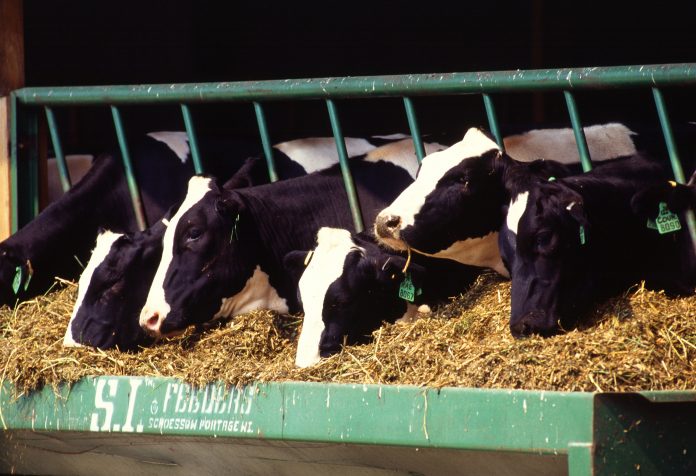
EVANSVILLE, Ind., Dec. 27 (UPI) — With years of low milk prices driving American dairy farmers out of business, the federal government plans to pour billions of dollars into new support programs.
The goal of the Dairy Margin Protection Program — part of the 2018 farm bill signed into law Dec. 20 — is to guarantee that farmers earn a certain amount for their milk. If farmers’ earnings drop below a minimum threshold, the government will cover the difference.
“The program looks to be very generous,” said Andrew Novakovic, a professor of agricultural economics at Cornell University. “The money should help [farmers] keep even with bills and maybe catch up a bit.”
This is welcome news to struggling farmers, many of whom have not made any money since milk prices dropped in 2014, Novakovic said.
That “was really the last year dairy farmers could make money,” he said. “Since then it’s been what I’ve called the long scrape. It’s been a long haul of below-average returns that are just wearing people out.”
The enduring low prices are hardest on small to midsize dairies that don’t have the capital to cover years of low revenue. Across the country, they are shutting down.
Wisconsin lost more than 600 dairy herds in 2018, according to the Wisconsin Department of Agriculture. That’s 7 percent of the state’s dairies.
Other states are losing farms at a similar pace.
“There are many cases where very well-managed farms will have to make the decision to leave the industry,” said Dianne Shoemaker, an Ohio dairy farmer who works with other farmers through the Ohio State University extension office.
That process is a painful one. Dairy farmers — especially those who manage smaller farms — tend to love what they do, Shoemaker said. And, in many places, the farms have been in their families for generations. They grew up on that land, as did their parents, their grandparents and the lineage can sometimes stretch beyond that.
“There are farms in the Northeast that have been in a family for 200 years,” Novakovic said. “So you’re losing family history, you’re losing your house. It’s a lot more gut-wrenching than going out of business may seem.”
The suicide rate among dairy farmers is inching up alongside dairy closures, and farm news outlets are running articles about how to deal with depression.
“It’s an ugly moment in the dairy industry,” Novakovic said.
The mechanics of the new program are complex. Because so many factors contribute to whether dairy farmers earn a profit for their milk, rather than simply guaranteeing an arbitrary milk price the program operates based on profit margins. Put simply, farmers are guaranteed that the price they’re paid for their milk will be a set amount above the average cost of cattle feed. In that way, the government will maintain a set margin of difference between milk and feed price.
“The rates created by this program should give enough breathing room to survive,” said Alan Bjerga, a spokesman for the National Milk Producers Federation.
The program is meant to support small farms, Bjerga said. It is set up like crop insurance, which means farmers must buy coverage. The rates for the first 5 million pounds of milk — which is what a small to medium-size dairy might produce in a year — are low, and receive generous coverage. Insuring anything beyond 5 million pounds becomes more expensive, Bjerga said.
This guards against the risk that heavily subsidizing large dairies will create an incentive to overproduce, flooding the market with cheap milk and costing taxpayers even more money.
Even with that safety net in place, there is concern that any farm subsidy program will keep prices low, Novakovic said.
“The danger is if it helps too much,” Novakovic said.
Prices increase when the demand for a product is greater than the supply. That’s basic economics. The United States is producing more milk than there is demand for, Novakovic said.
Demand for milk within the United States is fairly stable and predictable. There is some room to increase trade and create new demand that way. (America’s trade war with China and the enduring tariffs set by Mexico have hurt the dairy industry.) But, ultimately, production will have to decrease for prices to rebound. And, as painful as it is, the only way for production to decrease is for dairies to go out of business, Novakovic said.
“This government program, the only thing it can do is make it easier for farmers to stay in business,” he said. “And that’s why we do it, we feel sorry for the farmers and we want to help them stay in business. But that could be curtailing the mechanism for prices to stabilize. That could perpetuate a situation where prices are low.
“There is this notion that one day the clouds will part and the sun will shine and it will be a nice day again. But that’s not how economics works. And in the meantime, this could be a pretty expensive program.”





